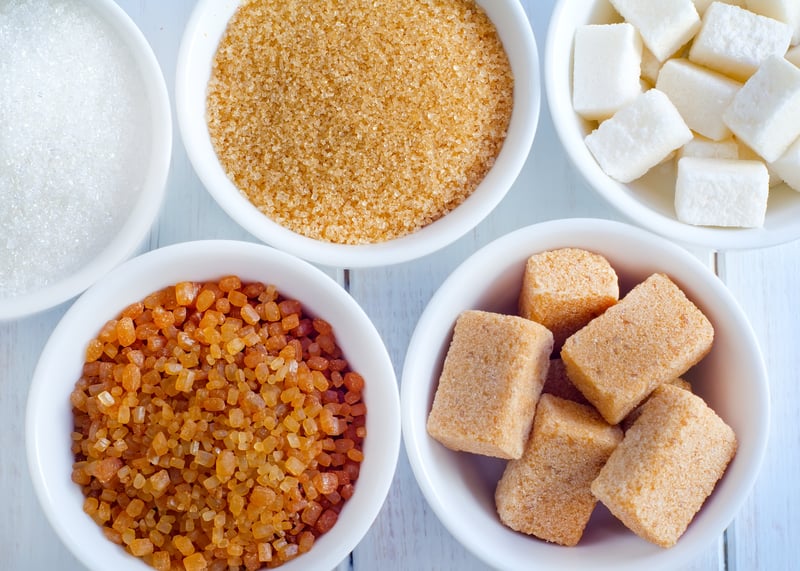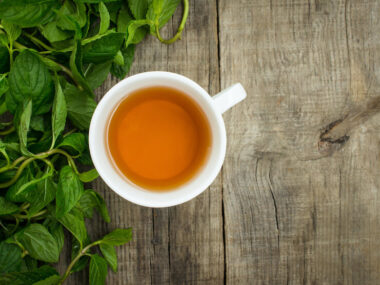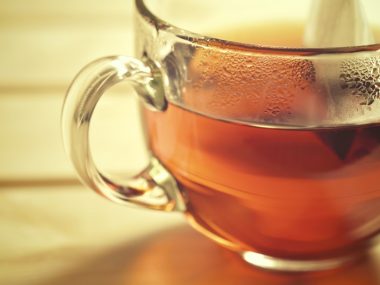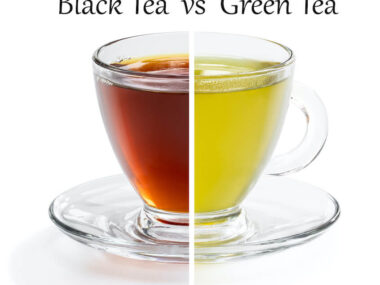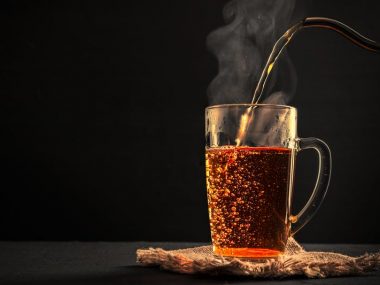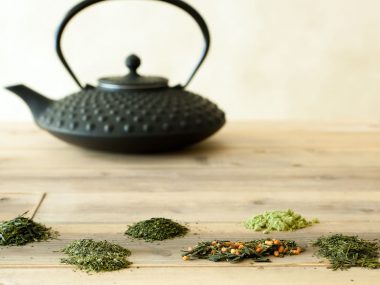There’s a whole world of options out there to sweeten and tame those astringent tannins in a cup of tea. Sugar, honey, and Splenda are no longer the stars of sweetness because many more are moving into the spotlight.
Table of Contents
Creative Ways To Sweeten Tea
When it comes to sweetening our tea, sugar is about as creative as we get. However, there are some other things you can use to cut the astringency of tea. We’ve included what tea goes well with each sweetener below.
1. Use Whipped Cream In Place Of Milk
- Black tea
- Oolong tea
- Puerh tea
2. Honey
- Goes well with any tea
3. Maple syrup
- Black tea (especially chai)
4. Use A Bit Of Freshly Squeezed Fruit Juice
- White tea: peach, pear, apricot, plum, grape, melon, apple
- Black tea: orange, lemon
- Oolong tea: orange, melon, peach, apricot, apple
- Green tea: melon, peach, orange, apple
5. Add Fruit To The Brewing Process
- White tea: peach, pear, apricot, plum, grape, melon, apple, blueberry, raspberry
- Black tea: orange, lemon
- Oolong tea: orange, melon, peach, apricot, apple, coconut
- Green tea: melon, peach, orange, apple, coconut
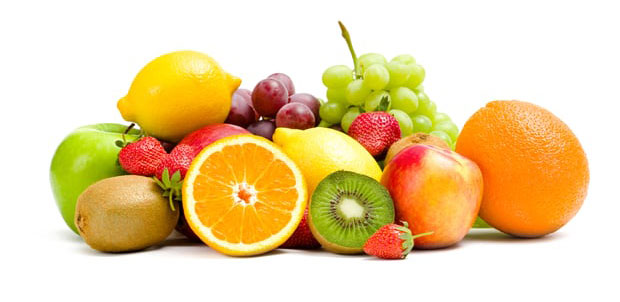
6. Drop In A Few Chocolate Chips
- Black tea: hojicha, chai, lapsang souchong, Assam
7. Add Some Flavored Syrup
- Fruity: best for green, oolong, and white tea
- Spicy: best for black tea
- Minty: best for Ceylon black tea and green tea
8. Use Raw Sugar For A Subtle Caramel Flavor
- Goes well with any tea
9. Add Some Brown Sugar For A Robust Caramel Taste
- Black tea: Assam, Hojicha, Lapsang Souchong, Nilgiri, Kenyan
10. Replace Milk With Melted Flavored Ice Cream Makes
- Butter Pecan: best for black tea, try with chai
- Mint Chocolate Chip: best for black or green tea
- Peach: best for green tea
- Strawberry-Chocolate: best for Ceylon or Assam with chocolate chips added
11. Spice It Up With Sweet Spices
- Pure vanilla: best for black, oolong or puerh tea
- Cinnamon: best for black, oolong or puerh tea
- Coriander: best for green tea
- Allspice: best for puerh tea
Get Acquainted With Different Types Of Tea Sweeteners
As we dive into the world of sweeteners, we are quickly met with more than the sugar cubes and the sugar that fills a sugar bowl. We will break it down into the different types of sweeteners out there and where they sit on the spectrum of what’s healthy and not so healthy. More importantly, we have evidence-backed data on what the ideal sweetener is for a cup of tea.
Natural Sweetener
Natural sweeteners are a very common go-to for sweetening tea. These sweeteners never undergo any processing and don’t contain harmful additives. To be considered “natural,” it must come from sap, juice, or plant matter.
Honey
Honey is a liquid of golden sweetness that only the honeybee produces. Within the hives of honeybees are bee-built combs where the honey is stored. Beekeepers harvest the honey, which is sold locally or commercially. There are numerous types of honey sold in stores; however, the healthiest is sourced locally in its raw, unfiltered state.
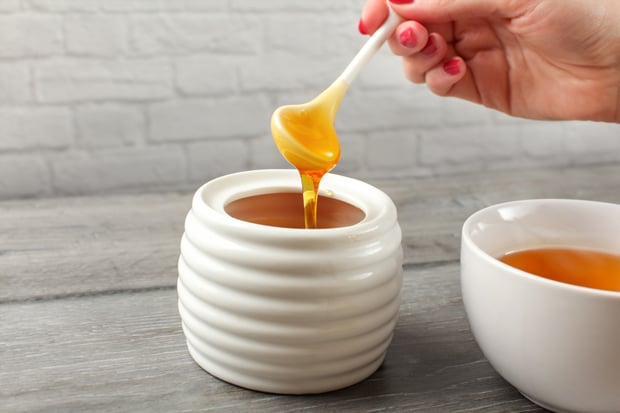
Health-conscious tea drinkers often use honey to sweeten their tea. There’s a lot to be gained through the health benefits that both honey and tea provide. When added to tea, honey adds a subtle element of nuttiness.
Stevia
This sweetener is derived from the Stevia plant (Stevia rebaudiana.) The leaves of the stevia plant are processed to extract steviol from the leaves. Crude stevia extract is far too bitter for consumption, so it undergoes purification to alleviate the bitterness. The end product is a white, grainy powder similar to Splenda.
Monk Fruit
The Monk plant (Siraitia grosvernorii) produces a fruit that is harvested and processed into a dry granular powdered sweetener (like Sweet’ n Low.) The International Food Information Council reports that Monk fruit is up to 200 times sweeter than regular sugar. Some tea drinkers find Monk fruit sweetener unpleasant when added to tea, while others find it very good.
Semi Processed Sweetener
This group of sweeteners comprises several that we recognize yet others that are unfamiliar. Sweeteners that undergo partial refinement include brown sugar, table sugar, and corn syrup. Table sugar is the most commonly used sweetener for tea.
The Sugar Association categorically lists sugars as “white,” “brown,” and “liquid.” The liquid version rarely, if ever, finds its way into a cup of tea.
White Sugars
Table Sugar
Sugar cane plants grow in fields known as “sugar plantations.” The cane is harvested and taken to a processing plant where the magic happens. A juice is extracted from the cane, and it’s this juice that ends up sugar as we know it.
The juice must go through alkalinization, which is done by adding lime. The clarified juice then has sucrose crystals added. The juice and sucrose are boiled, now forming sugar crystals. These sugar crystals are transferred to a centrifuge where the high speed separates the molasses from the crystals.
The remaining crystals are what’s known as raw sugar. Raw sugar has some of the molasses still present. For pure white sugar, further processing through heating turns the raw sugar into table sugar.
Confectioners (Powdered) Sugar
Table sugar is further processed by grounding it until it is ultra-fine, almost to a powder-like texture. Cornstarch is added, which gives powdered sugar its powdery look. Some tea drinkers ask, “Can I sweeten tea with powdered sugar?”
Powdered sugar causes cloudy tea and may end up clumping, especially in iced tea. Keep in mind that cornstarch acts as a thickening agent, so the last thing you want is gravy-like tea.
Brown Sugars
Brown Sugar
This sugar is nothing more than raw (or table) sugar with some of the molasses added back in. Over the past few years, a tea trend of brown sugar milk tea took off and has many tea drinkers now adding brown sugar to a cup of regular tea. The brown sugar added to a black or Puerh tea adds hints of caramel. It doesn’t go too well with green tea, though.
Turbinado Sugar
This is what’s known as “raw” sugar, which is the sugar that follows a centrifuge in producing table sugar. It still has some molasses present but is drier in crystal form than brown sugar, which has a heavier molasses content than raw sugar. Turbinado sugar also adds a delicate nuance of caramel but is not as intense as brown sugar because the molasses count is far less than brown sugar.
Synthetic And Artificial Sweeteners
Now we arrive at the threshold of numerous controversial sweeteners. These sweeteners are produced through a chemical interchange resulting in sugar alcohols and artificial means of sweetening consumptives.
Some of the most common sweeteners within this group include:
- Saccharin
- Aspartame
- Xylitol
- Isomalt
- Maltitol
Saccharin is often thought of as “old school” because of the new sweeteners that have hit the food and beverage industry. The sweetness of artificial and synthetic sweeteners is far more potent than natural sweeteners or sugars.
No matter how you look at it, there are often side effects that come with consuming or over-consuming these sweeteners. For example, Meyler’s Side Effects of Drugs (16th Edition) reports that the human body processes aspartame (within the gastrointestinal tract) into methanol, aspartic acid, and phenylalanine. Methanol causes us to feel gaseous, while phenylalanine causes illness and seizures in adults who have PKU (phenylketonuria – a metabolic disorder.)
What Is The Healthiest Way To Sweeten Your Tea?
So, almost all sweeteners are laid out there to consider. What are healthy sweeteners for tea, and if a tea drinker is diabetic, how do you sweeten tea without sugar?
While these are concerns of tea drinkers, we don’t have the medical expertise to advise or recommend what sweetener is best for you. Your healthcare provider is the perfect person to talk to.
Those who happen to have PKU (phenylketonuria) should especially consult with their doctor before using any sweetener. Women who are pregnant or nursing should equally be cautious of sweeteners.
What Is The Best Sugar To Use In Tea?
An insightful study by Food Chemistry has the answer! Sugar and honey were found to decrease the antioxidant benefit in tea. Honey contains chrysin, pinobanksin, Vitamin C, catalase, and pinocembrin, which all act as antioxidants. However, when added to tea, honey has the most “inhibiting” effect on tea. Tea’s antioxidant levels were also reduced by adding milk to tea. Table sugar also has the same impact on tea.
Stevia was found to have no effect or interaction with tea molecules in unadulterated tea. As such, Food Chemistry recommends it as the ideal sweetener for tea.
Searching For A “Sweet” Ending
Wow, who would have imagined that the simple act of sweetening our cup of tea would be so profoundly complex? There’s a lot to mull over if you want that perfect cup of tea.
